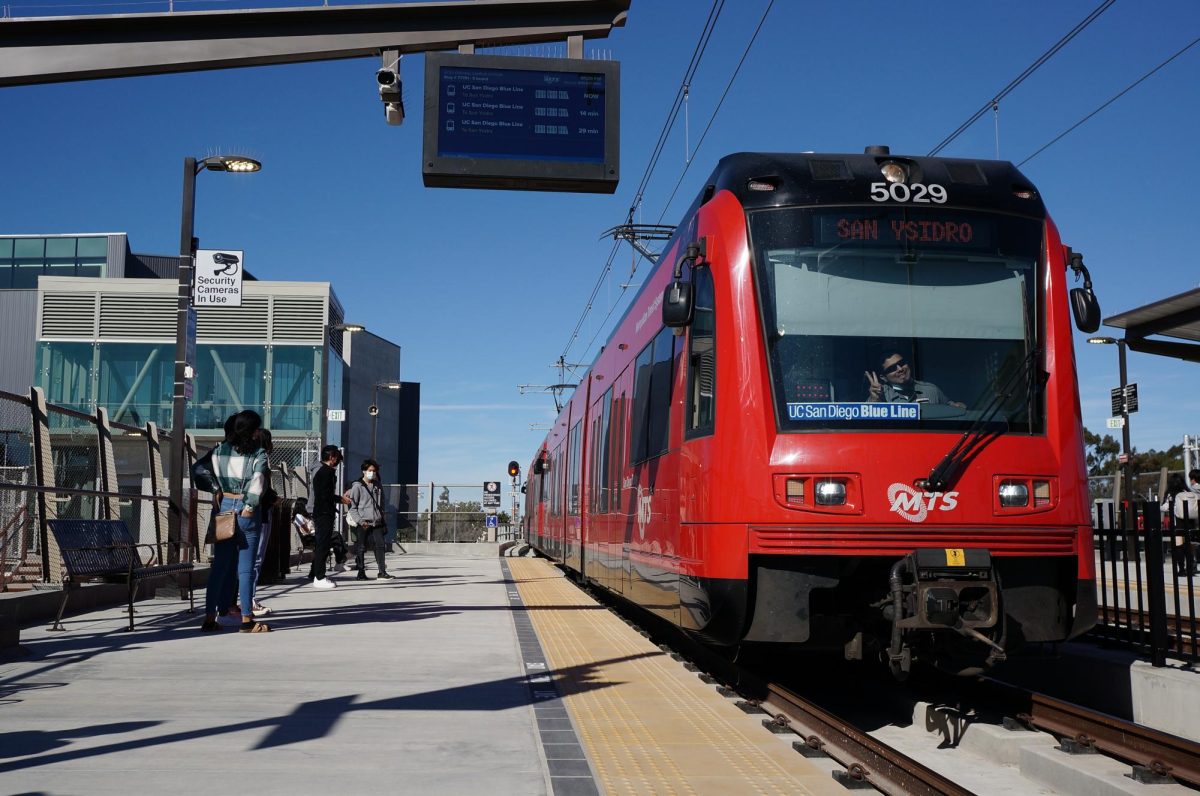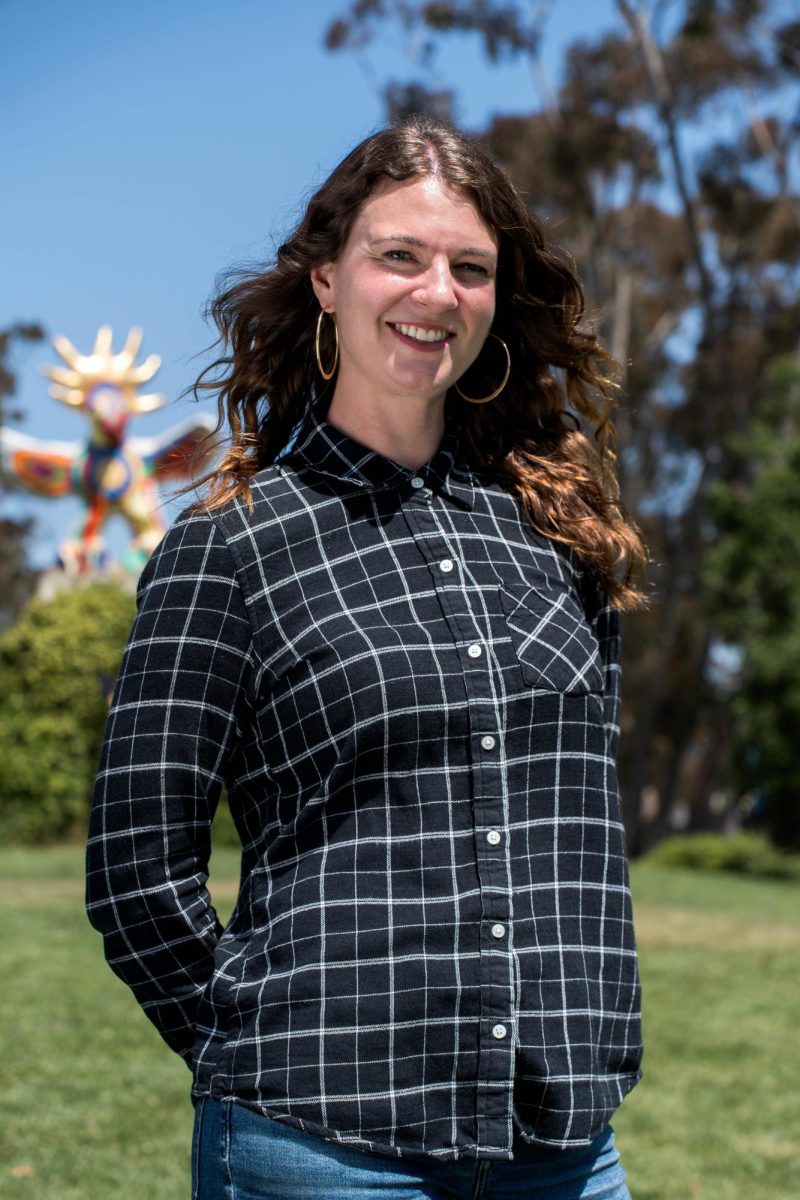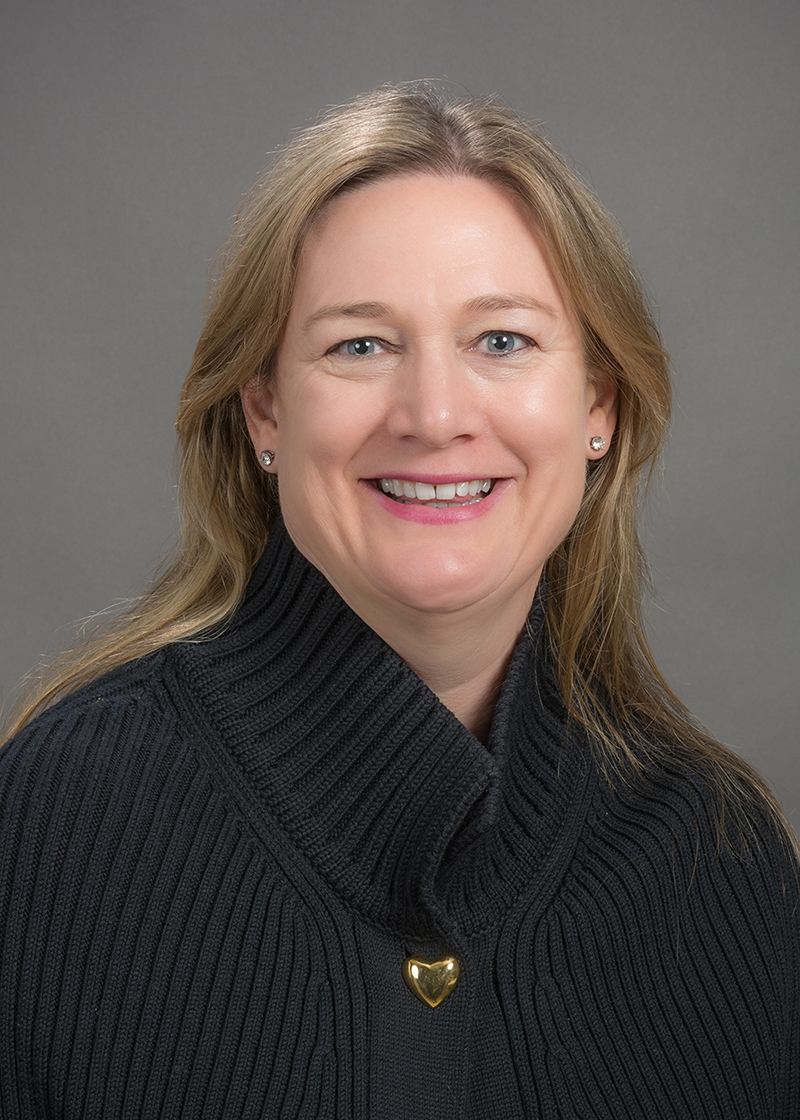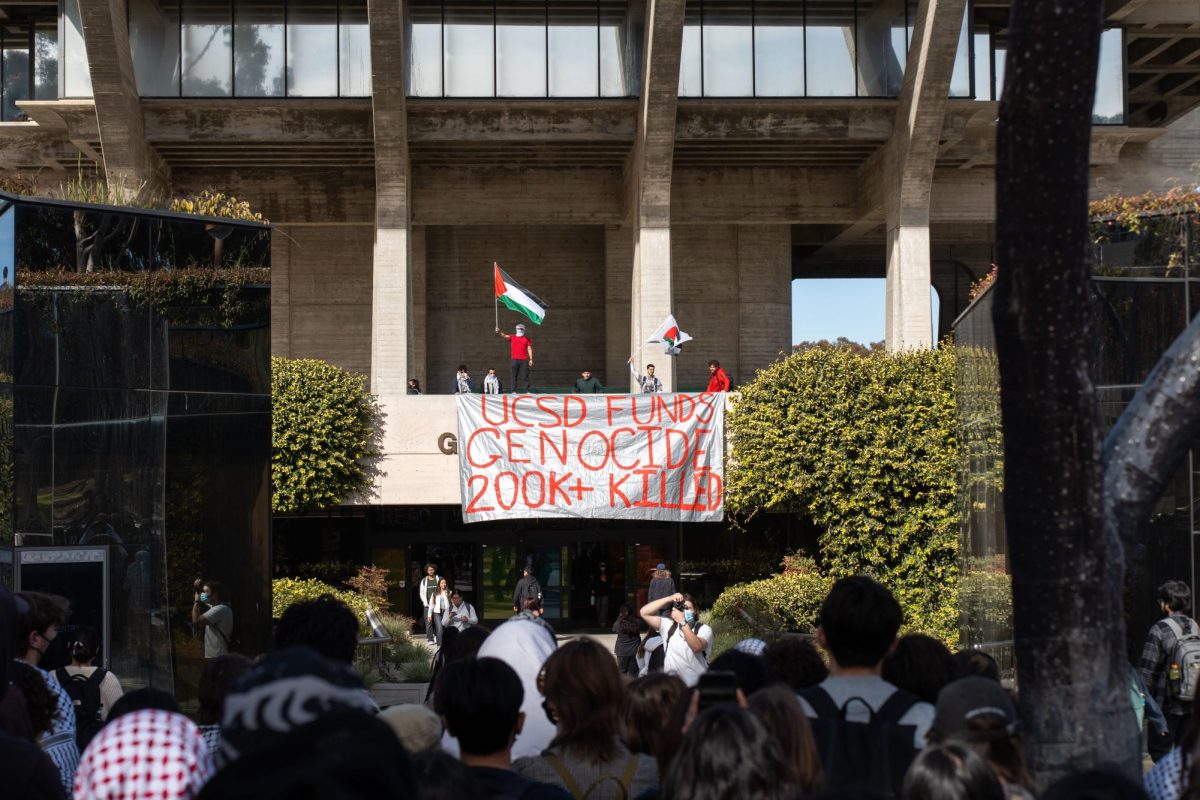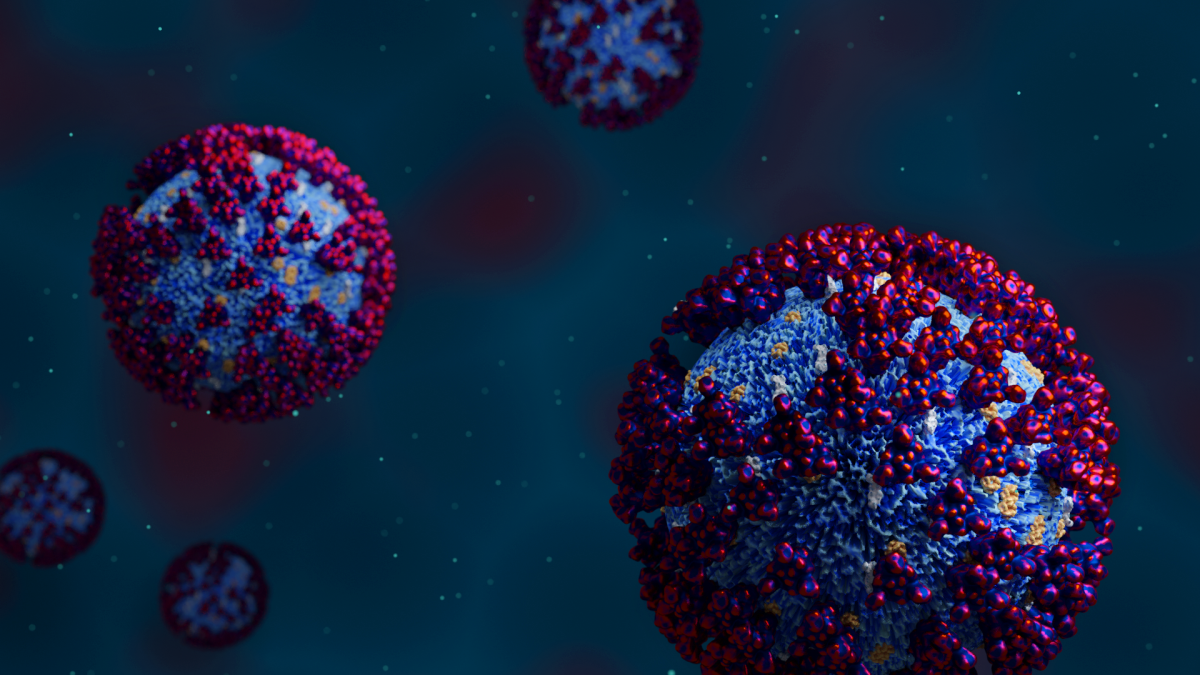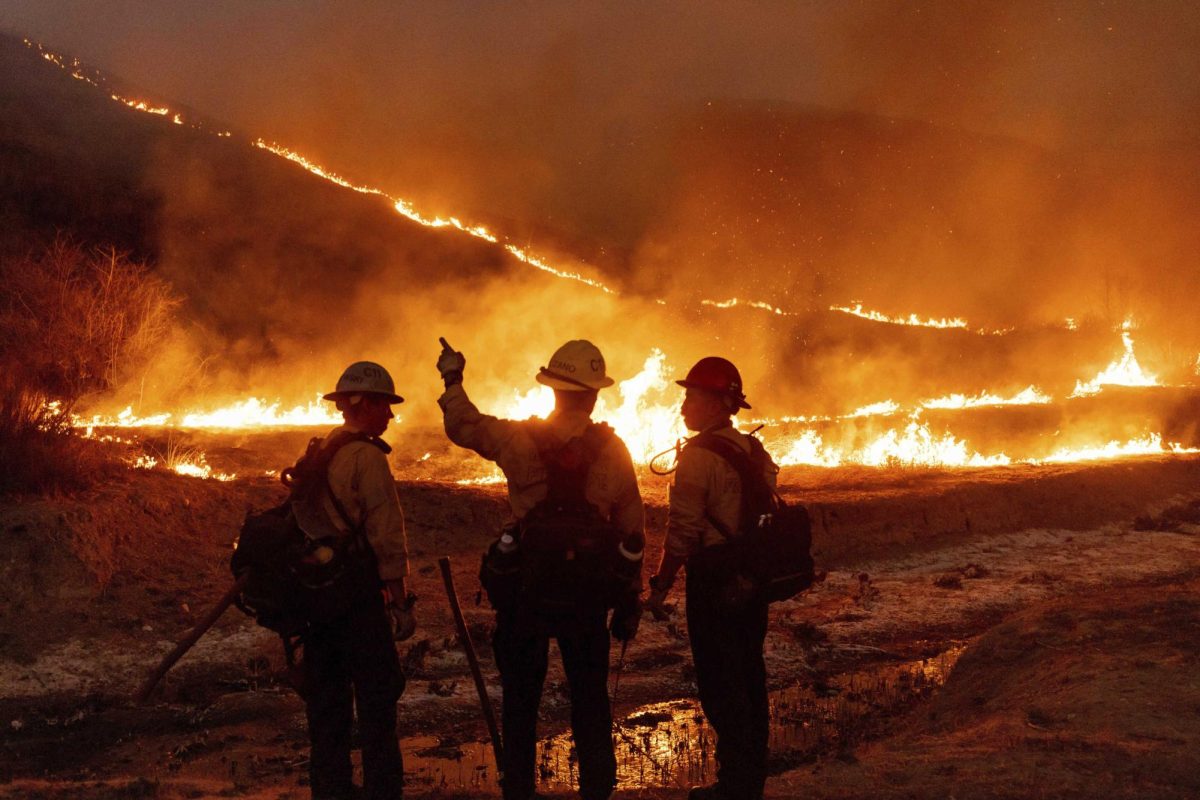According to a SDMTS performance monitoring report from July 2022 to June 2023, the San Diego Trolley light rail service has an average of 119,200 riders per weekday, making it one of the most used light rail systems in the country. Since the Blue Line extension was added in 2021, connecting UTC and UC San Diego to the rest of the trolley line, ridership has greatly increased.
This dramatic increase in ridership is partly due to UCSD students who use the trolley to commute to and from school from their off-campus housing. With the well-known expensive rents in the La Jolla area surrounding campus, students can get cheaper housing farther from campus with the option of trolleying to school.
The trolley is an essential facet of many students’ lives. Many students have noted the lack of parking on campus and find the trolley a helpful resource as they commute to and from campus. The trolley’s successes and shortcomings have been shaped by both its design and its surroundings.
Among those 119,200 riders is Seventh College sophomore Katelyn Au. Without a car or nearby bus stop, the trolley is an essential part of her daily commute. Au also noted how she and her friends have been able to use the trolley on weekends to hang out and explore parts of San Diego, like Little Italy and Old Town, as well as to visit friends at San Diego State University.
“The trolley also connects to other transits like at Old Town, which makes it really easy and convenient to explore other places that the trolley can’t directly take you to,” Au said.
The trolley’s connection from the UCSD campus to the city allows students to get to know the city and culture of the area better. This relationship between transit and the city underscores the potential that transportation infrastructure can have on how we move and how we experience and engage with our surroundings.
Diego Velasco, a professor at UCSD, has a planning and urban design consulting practice called CityThinkers. Velasco has worked on numerous community plans that look at the San Diego Trolley, one being the Mission Valley Community Plan. His team’s assignment for that plan was to look at the area around the Mission Center Road trolley station and identify a vision for the next 30 years.
“We wanted to look at if that area were to redevelop, and some of those strip malls and auto-oriented shopping centers could turn into communities that were walkable, connected, could embrace the San Diego river, and then find ways to connect people to the trolley station,” Velasco said.
Velasco and the CityThinkers examine how the designs at hand can inform the activity in the neighborhood, and how they can make intentional choices to embrace the nature of the land. Another area that they have worked on is the UCSD area itself — the University Community Plan.
“With the large investment to bring the trolley up to the campus came a huge opportunity to really transform everything around the stations for the better — to change or reinforce the transit use through density around the stations, more housing opportunities, and a greater mix of uses,” Velasco said.
While the design of the trolley itself is essential, just as important is where it’s placed — what’s designed around it and what draws people to use the trolley. Au noted this distinction of the location of the trolley station on campus.
“I think it would be nice if the location of the stop were more central to everything given the name ‘UCSD Central Campus station.’ It takes me a while to walk to my classes from the trolley just because it’s not very central,” Au said.
In 2019, the UCSD Design Lab, in partnership with many other programs, held a Designathon for the addition of the Blue extension to the campus. Students and neighbors participated to bring ideas of making the stop more central by bringing more activity around it. The goal of the Designathon was to expand mobility between the trolley station and the campus. Ideas included micro-mobility routes and docking stations, passenger pick-up points and flows, and services such as charging stations, apps, and digital signage.
One of the significant negative stigmas about public transportation is the issue of safety. Au said she often feels safe on the trolley because there are a lot of other students and people on the same route. Velasco also noted the safety issue and how design can inform the safety of the trolley.
“A lot of what I hear from students is that they don’t like to ride the Blue Line, especially downtown, because they don’t feel safe and it takes too long,” Velasco said. “Abandoned spaces where there is no activity are not as safe as active spaces full of people. So there needs to be design in mind to create spaces with multiple uses that bring many people in and create eyes on the street.”
The discussion around transportation infrastructure often centers on functionality and efficiency. However, there’s a growing recognition that it should also serve as a vibrant public space, contributing to the liveliness and safety of a city. Velasco’s insights underline this perspective, emphasizing the importance of design in creating inviting and secure environments around transit centers.
“Transportation infrastructure is just that, infrastructure. It’s engineering. It’s a functional thing,” he said. “And while yes, it is, it can also be a place. And it should also be an attractive element and a public space for our city. And I think if we think of it that way, we can address some of these concerns with crime behavior and these neglected stations.”
As cities evolve and populations grow, there’s a need for transportation systems that can not only transport people but can also integrate with their environment and provide a place for activity and community.
“And so once we get more people riding the transit, maybe more people will say, ‘Hey, why don’t we have a little cafe right next to this transit stop?’ or ‘Why don’t we provide some retail around this station, or have more housing here instead of an empty parking lot?’ So I’m hopeful for the future of our transit and our cities,” Velasco explained.


